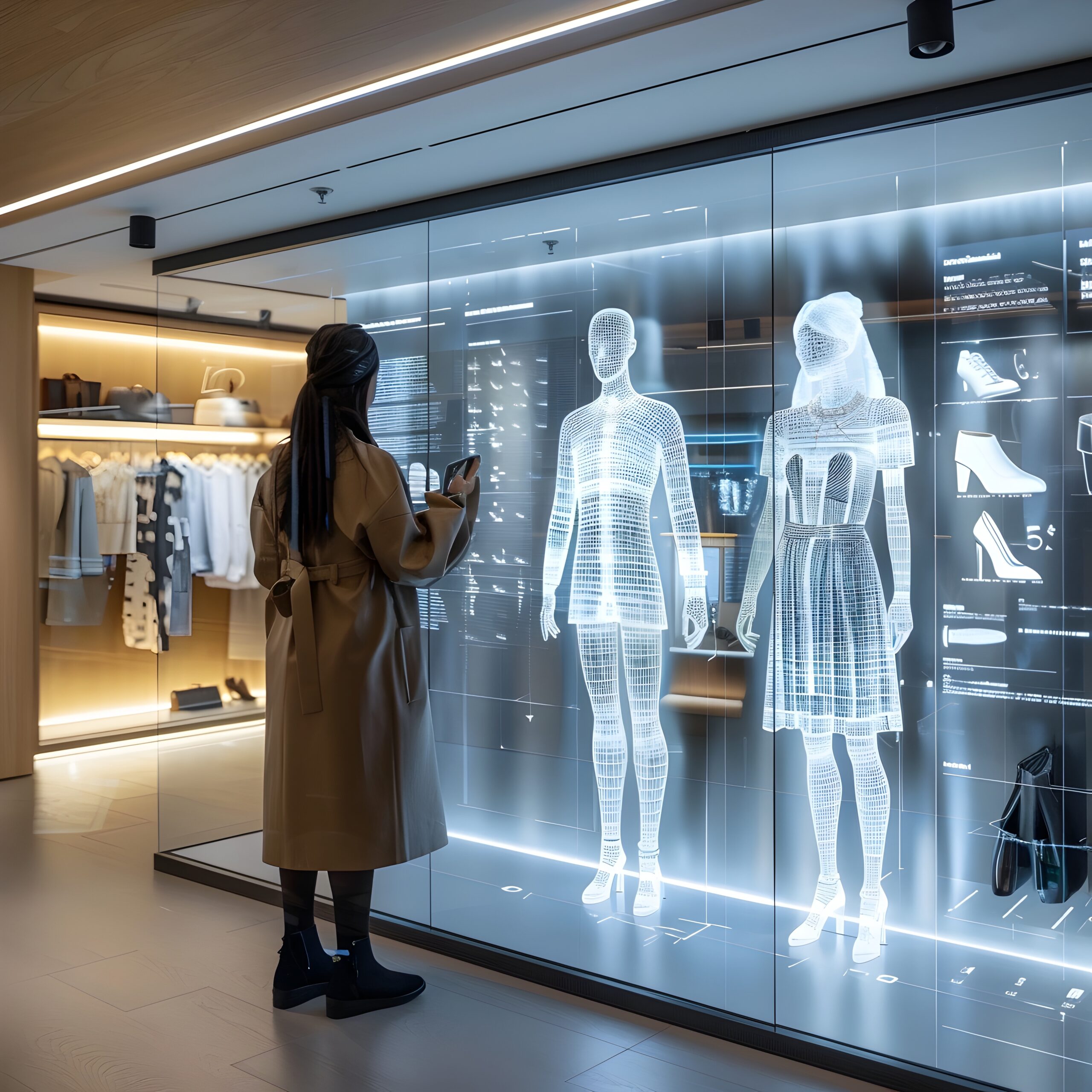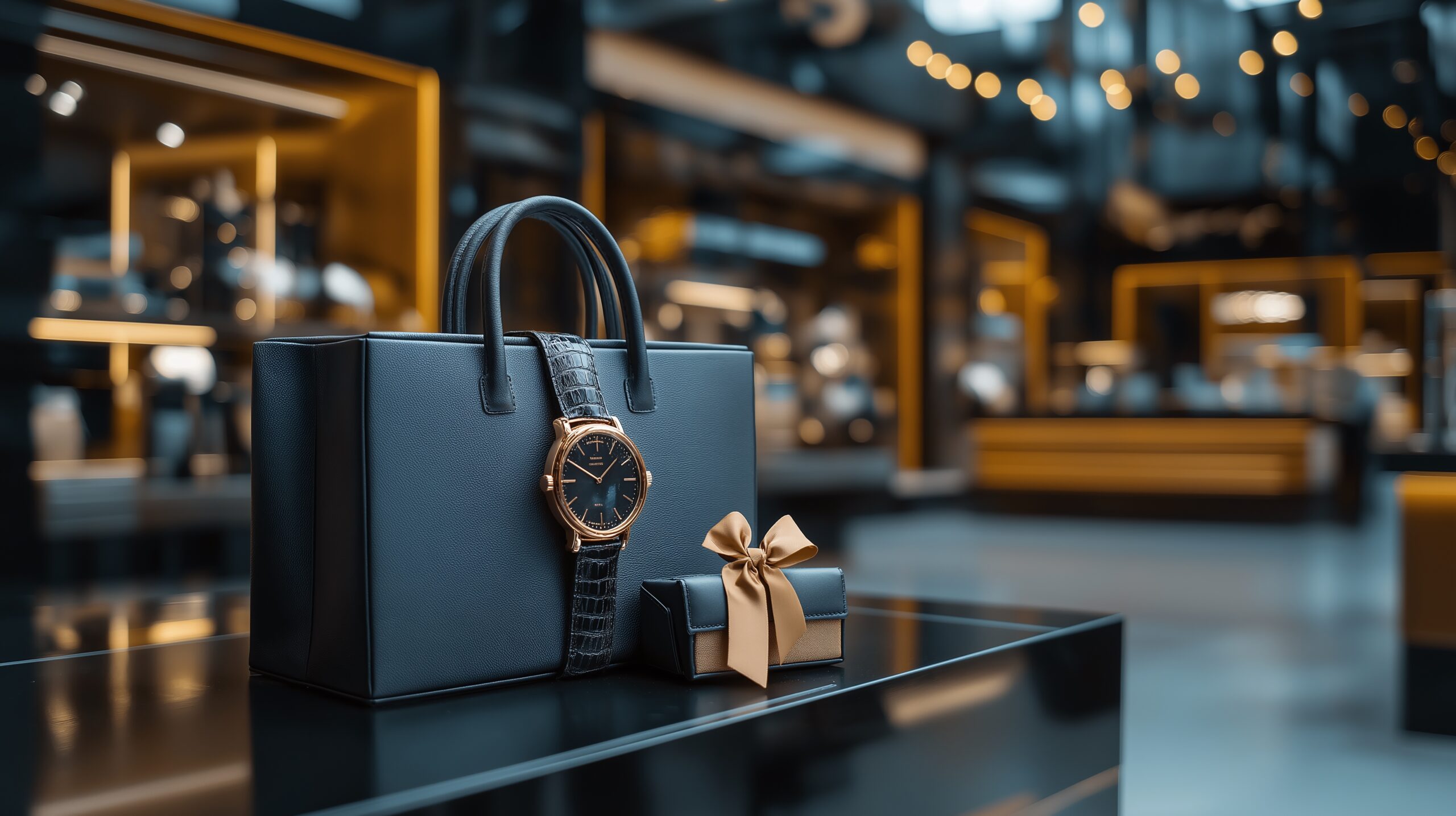How can luxury brands navigate digital transformation while maintaining their exclusivity and authenticity? What strategies can luxury brands use to implement AI-driven personalization in their digital transformation without compromising privacy and trust? How can technologies like AR, VR, and blockchain support luxury brands in their digital transformation while preserving heritage and craftsmanship?
In an era of digital transformation, luxury brands must embrace innovation without diluting the core values that make them unique. The challenge lies in leveraging technology to enhance exclusivity, personalization, and craftsmanship while avoiding pitfalls such as over-automation and intrusive data collection. Thoughtful integration of digital tools can elevate the luxury experience, reinforcing brand identity rather than replacing tradition.
From immersive AR and VR storytelling to AI-driven personalization and blockchain authentication, digital transformation offers new opportunities for luxury brands to deepen customer engagement and trust. However, responsible innovation is key – technology should be a seamless extension of a brand’s identity, not a disruption. By prioritizing discretion, heritage, and authenticity, luxury brands can use digital tools to strengthen relationships and elevate their craft while staying true to their essence.
Table of Contents:
The Challenges: Balancing Digital Innovation with Luxury Brand Values
The Digital – Exclusivity Paradox
Opportunities: How Technology Can Enhance the Luxury Experience
Enhancing Storytelling and the Product Experience Through AR and VR
Personalized Experiences Through AI and Data
Connecting Craftsmanship with Digital Tools
Blockchain for Transparency and Authenticity
Responsible Innovation: Preserving Luxury’s Core Values Amid Digital Transformation
The Future of Luxury: A Synergy of Tradition and Innovation
Introduction
In an age of rapid digital transformation, luxury brands face a pivotal challenge: how can they integrate cutting-edge technologies without compromising the essence of what defines them? At its core, the intersection of luxury and technology isn’t about replacing tradition; it’s about creating synergy. Thoughtful innovation can elevate the luxury experience while reinforcing the brand’s values and deepening its storytelling. However, missteps, such as over-automation or intrusive personalization, risk eroding trust and diluting a brand’s identity.
The key for luxury brands lies in approaching technology not as a disruption but as a tool to complement their storied heritage. In this blog, we’ll explore luxury brand strategies for digital innovation that strengthen rather than dilute the essence of luxury, showing how brands can evolve while staying true to the core values that define them.
The Challenges: Balancing Digital Innovation with Luxury Brand Values
The luxury sector has always distinguished itself by offering experiences that are deeply personal, highly exclusive, and often rooted in tradition. However, the growing influence of digital culture has fundamentally reshaped the way consumers interact with brands. In this evolving landscape, luxury brands must adapt to meet modern expectations while preserving their distinctive character.
Luxury brands face three distinct challenges.
The Digital – Exclusivity Paradox
Luxury has long relied on exclusivity and scarcity to maintain its allure. However, modern consumers expect personalized and immersive experiences that connect the physical and digital worlds. The challenge is to meet these demands without undermining the rarity and prestige that defines luxury. If a brand becomes too accessible, it risks losing its mystique; if it remains too exclusive, it may alienate digital-first consumers.
The Human-Technology Balance
In pursuing digital strategies, brands face another critical challenge: balancing automation with personal touch. While AI and automation can improve efficiency, overusing them risks compromising the discretion and attention that define luxury. Poorly executed personalization can feel intrusive, leaving consumers feeling surveilled rather than exclusive. Additionally, the collection and use of customer data, while valuable for personalization, raises concerns about privacy and trust – elements that are particularly crucial in the luxury sector.
The Generational Divide
The challenge extends to serving multiple generations with distinct expectations. While younger consumers seek innovation and digital engagement, older generations often value traditional touchpoints, like flagship stores and personal relationships with sales associates. This divide creates tension in how brands allocate resources and design experiences, potentially risking the alienation of one group while trying to appeal to another.
Opportunities: How Technology Can Enhance the Luxury Experience
Technology, when thoughtfully implemented, has the power to elevate the luxury experience. From amplifying storytelling to expanding the boundaries of design and craftsmanship, digital innovation is opening new possibilities for luxury brands. Here are four key areas where technology can meaningfully enhance the luxury experience.
Enhancing Storytelling and the Product Experience Through AR and VR
Storytelling has always been a cornerstone of luxury. It connects consumers to the heritage, artistry, and exclusivity of a brand. Technologies like augmented reality (AR) and virtual reality (VR) are revolutionizing how these stories are told, creating immersive experiences that allow consumers to engage with brands in entirely new ways.
AR and VR can digitally transport consumers to unique environments, enabling them to explore a brand’s history, craftsmanship, and values. These tools create a deeper appreciation for the artistry behind each creation. Imagine stepping into a Louis Vuitton atelier through a VR headset to watch artisans hand-stitch a bag or taking a virtual journey through Hermès’ equestrian heritage. These experiences foster emotional connections that go far beyond traditional transactions.
AR also transforms the product experience by allowing consumers to interact with luxury goods in innovative ways. Through AR-enabled apps, customers can virtually try on sunglasses, preview how a lipstick shade looks on their skin tone, or visualize how a handbag would complement their personal wardrobe. Gucci’s AR-powered app, which enables customers to “try on” sneakers by pointing their phone’s camera at their feet, exemplifies this potential. Similarly, Burberry’s collaboration with Google allows customers to view products in 3D directly from search results, letting them examine details like fabric texture and hardware finishes, bringing a sense of physicality to the digital realm.
These innovations seamlessly blend convenience with personalization, creating immersive experiences that deepen brand engagement.
Personalized Experiences Through AI and Data
Personalization is central to luxury, with bespoke services making every customer feel uniquely valued. Today, AI and data analytics elevate this further, enabling tailored experiences that feel both intuitive and exclusive.
AI-driven tools can analyze consumer preferences, purchase histories, and emerging trends to craft highly personalized recommendations. For example, these sophisticated algorithms can identify complementary pieces based on seasonal collections and past purchases, creating a curated experience that mirrors the attention of a personal shopper.
The key lies in implementing these technologies with discretion. Overuse of consumer data or aggressive recommendations can feel invasive rather than exclusive. Luxury brands must prioritize transparency about data usage while giving customers meaningful control over their privacy preferences. When thoughtfully executed, AI-driven personalization should feel organic, enhancing the intimacy and exclusivity that define luxury, rather than diminishing it.
Connecting Craftsmanship with Digital Tools
Technology isn’t just transforming the customer experience; it’s revolutionizing how luxury goods are designed and crafted. Digital tools like 3D printing and virtual prototyping enable artisans to push creative boundaries while preserving the integrity of traditional craftsmanship.
3D printing allows designers to create precise prototypes rapidly, giving artisans more time to perfect the final product. This efficiency ensures that each creation meets the brand’s exacting standards while accelerating innovation. Virtual prototyping enables brands to experiment with groundbreaking designs while reducing material waste – a crucial consideration as sustainability becomes increasingly central for luxury.
This synergy between technology and craftsmanship proves that innovation can amplify tradition rather than replace it. By thoughtfully incorporating digital tools, luxury brands can create pieces that are both forward-thinking and deeply rooted in heritage, ensuring the essence of luxury evolves while remaining authentic.
Blockchain for Transparency and Authenticity
Blockchain technology is emerging as a powerful tool for preserving luxury’s core values: authenticity and exclusivity. By creating an immutable digital record of a product’s journey, blockchain ensures that every item’s heritage is verifiable, reinforcing both its value and trustworthiness.
The Aura Blockchain Consortium, founded by luxury houses including Louis Vuitton, Cartier, and Prada, exemplifies this potential. Their blockchain-backed digital certificates trace each product’s complete journey, from raw material sourcing to final manufacture, providing consumers unprecedented visibility into their purchase’s authenticity and origin.
Beyond authentication, blockchain strengthens supply chain integrity by addressing critical vulnerabilities in luxury distribution. The technology creates an unbreakable chain of custody that protects against counterfeiting and unauthorized distribution while enabling precise product recalls when necessary. Each transaction and transfer is permanently recorded, giving consumers confidence in the provenance of their purchase.
Blockchain also meets luxury’s growing imperative for sustainability transparency. By documenting each step in a product’s lifecycle, brands can verify ethical sourcing and demonstrate environmental responsibility. This level of transparency also resonates with modern luxury consumers who see sustainability as integral to true luxury.
Responsible Innovation: Preserving Luxury’s Core Values Amid Digital Transformation
Innovation must serve a clear purpose beyond novelty. Technologies like AR, blockchain, and AI deliver their greatest value when they enhance storytelling, build trust, and preserve brand identity, not when deployed as a mere spectacle. The human touch remains irreplaceable, and technology should support, not replace, the intuition and warmth of skilled sales associates. Luxury is built on relationships and rituals, not merely transactions, and brands must prioritize these personal connections even as they embrace digital tools.
Privacy is critical. Luxury consumers value discretion, and brands must respect this through transparent data practices and clear communication about how information is used. Straightforward privacy controls and opt-out options reinforce the trust that defines luxury relationships.
Every technological advancement should align with and amplify the core principles of exclusivity, artistry, and genuine human connection.
The Future of Luxury: A Synergy of Tradition and Innovation
The luxury industry stands at a fascinating crossroads. While emerging technologies offer new ways to connect, create, and inspire, the heart of luxury remains unchanged – it’s still about beauty, craftsmanship, and human connection. The most compelling opportunities lie not in chasing every new innovation but in carefully choosing technologies that amplify what makes luxury special.
The winners in this next chapter won’t be the brands with the flashiest tech offerings. They’ll be the ones who understand that technology is simply a new tool in the artisan’s workshop – one that can enhance the deep emotional connections luxury has always been built upon. Whether it’s bringing an atelier’s craftsmanship to life through immersive experiences or using digital innovation to tell deeper stories, technology should feel like a natural extension of the brand’s identity.
What matters most isn’t the technology itself but how brands use it to strengthen their relationships with customers and enhance their craft. The future of luxury will be written by those who understand this balance – and have the courage to say no to innovation that doesn’t serve their core purpose.




